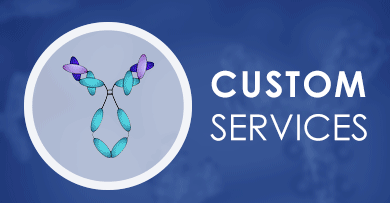+ Filter
 Loading...
Loading...

TRG
 Loading...
Loading...Anti-TRG Products
- Mouse Anti-TRG Recombinant Antibody (clone 7A5) (NEUT-2232CQ)
-
- Species Reactivity: Human, Fruit fly
- Type: Mouse IgG1
- Application: WB, Activ, ELISA, IP, IHC-Fr, Neut, FC
- Anti-Human TRG Immunohistochemistry Kit (VS-0525-XY7511)
-
- Species Reactivity: Human, Fruit fly, Monkey
- Target: TRG
- Application: IHC
- Anti-TRG Immunohistochemistry Kit (VS-0525-XY7510)
-
- Species Reactivity: Human
- Target: TRG
- Application: IHC
View More Products
Can't find the products you're looking for? Try to filter in the left sidebar.Filter By Tag
More Infomation
Our customer service representatives are available 24 hours a day, from Monday to Sunday. Contact Us
For Research Use Only. Not For Clinical Use.
Background
T cell receptors recognize foreign antigens which have been processed as small peptides and bound to major histocompatibility complex (MHC) molecules at the surface of antigen presenting cells (APC). Each T cell receptor is a dimer consisting of one alpha and one beta chain or one delta and one gamma chain. In a single cell, the T cell receptor loci are rearranged and expressed in the order delta, gamma, beta, and alpha. If both delta and gamma rearrangements produce functional chains, the cell expresses delta and gamma. If not, the cell proceeds to rearrange the beta and alpha loci. This region represents the germline organization of the T cell receptor gamma locus. The gamma locus includes V (variable), J (joining), and C (constant) segments. During T cell development, the gamma chain is synthesized by a recombination event at the DNA level joining a V segment with a J segment; the C segment is later joined by splicing at the RNA level. Recombination of many different V segments with several J segments provides a wide range of antigen recognition. Additional diversity is attained by junctional diversity, resulting from the random addition of nucleotides by terminal deoxynucleotidyltransferase. Several V segments of the gamma locus are known to be incapable of encoding a protein and are considered pseudogenes. Somatic rearrangement of the gamma locus has been observed in T cells derived from patients with T cell leukemia and ataxia telangiectasia.

